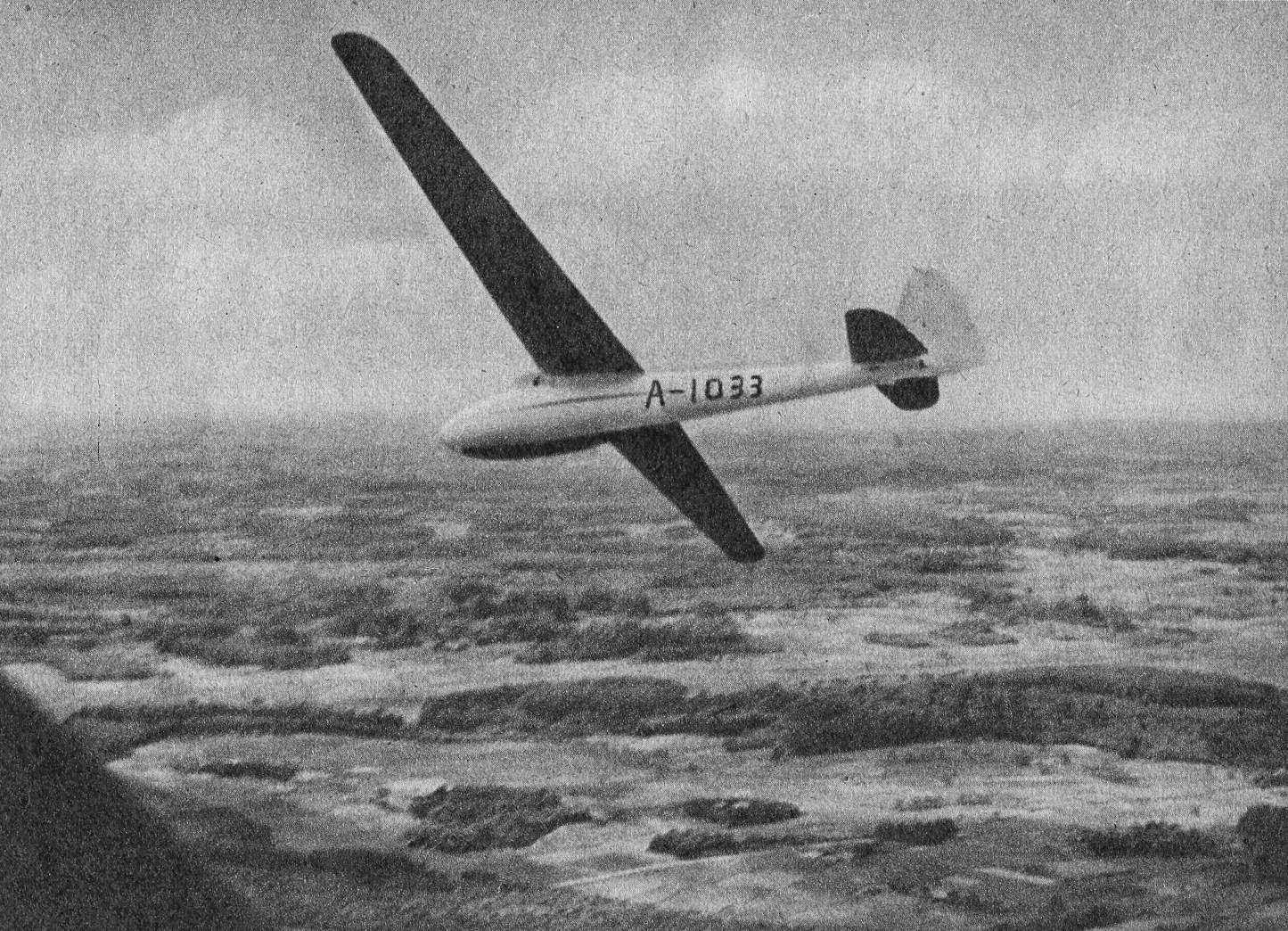The following stills are from a vintage new reel. The Nakajima Ki-44 "Shoki" (Tojo) in the foreground has a most interesting tail marking, a "ken" (sword), and together with the other Ki-44 belong to the 104th Sentai.




The above were first introduced in the first of a two part series of articles featured in the May 2003 issue of the magazine "Scale Aviation"*, written by Yoshimura Hitoshi and Abiko Kunyo, illustrated by Saito Hisao.
According to the article the tail marking possibly was one applied to a "Shoki" belonging to the "tokko" (ramming unit) of the 104 Sentai named "Kikusui-kogekitai" (chrysanthemum-attack unit) to differentiate the particular aircraft from the others. The aircraft of the ramming unit had heavy equipment like armament and radio removed to gain more speed. Unfortunately the news reel does not show the wing leading edges and therefore it cannot be confirmed if this particular "Shoki" still had its armament on. The Ki-44 in the background with the two stripes is also unidentified.
Our good friend Devlin Chouinard created the beautiful illustration below of the marking on the "Shoki" tail. As you know colour is very difficult to tell from b/w photos. So in this case it is shown simply as black. Red or blue are ofcourse also possible.

The 104th
Sentai was organised on August 15, 1944 in Ozuki base, Yamaguchi Prefecture (still in use,
here) with members of the 4th
Sentai. Initially it was to be a Nakajima Ki-84 "
Hayate" unit but actually received none and there were only six pilots that could fly Ki-84s and one maintenance member. The unit was ordered to relocate to Manchuria but it was something beyond their capabilities. On August 28 unit commander Takiyama went to another unit, got a "
Hayabusa" and flew alone to
Changchun. The commander of the 2nd Air Army Itahana was really looking forward to add an all "
Hayate" unit to the Army's strength so his disappointment was really big when he saw a lone "
Hayabusa" arriving. The 104th was then ordered to relocate and train in Mukden and the 2nd Air Army managed to gather a number of "
Hayabusa" and "
Shoki" and from September 1944 six pilots and 12 maintenance crew members from the Manchukuo Air Force were added to the
sentai. On September 8, when information arrived that B-29s were to bomb south Manchuria, Takiyma and another pilot flew on their own initiative from Mukden to
Dalian and tried to intercept the bombers, but to no avail.
On September 26, 80-90 B-29s bombed south Manchuria and Takiyama took off with six "Shoki" and managed to cause light damage to one bomber.
In November the 104th received new pilots and their first two "Hayate" and started intensive training. Those who completed this, flew to Utsunomiya and ferried back more "Hayate" (exact number unknown). On November 30 the unit could finally reach its maximum strength of pilots, maintenance crew members and aircraft. In the beginning of December it had four "Hayate" in the Sentai HQ, the 1st and 2nd Chutai had together eight "Hayate" and eight "Shoki". The 3rd was a training Chutai with 11 "Hayabusa".
From the middle of December the unit became responsible of the defence of
Anshan and dispatched 12 "
Hayate" and 20 "
Shoki".
Around that time the "Kikusui-kogekitai" was organised with four members flying three "Shoki" and one "Hayabusa".
The 104th intercepted B-29 bombing raids on December 17 and 21 claiming one B-29 shot down on the first and a number probables. In both cases the interception forced the B-29s to drop their bombs prematurely, far away from their target.
Before the Soviet Army invasion of Manchuria the 104th had in its strength 50 "Hayate" and 30 "Hayabusa" and "Shoki".
On August 12, 1945 a group of "
Hayabusa" and "
Shoki" from the 104 and other units attacked Soviet tank formations in
Linxi, Inner Mongolia. But due to very low provisions of fuel and bombs the unit returned to Anshan on August 13 where the end of the War found them.
Hasegawa has released a kit in 1/48.
* When it was still interesting and cool and didn't rely on photos of scantily clad girls in order to sell.
























































